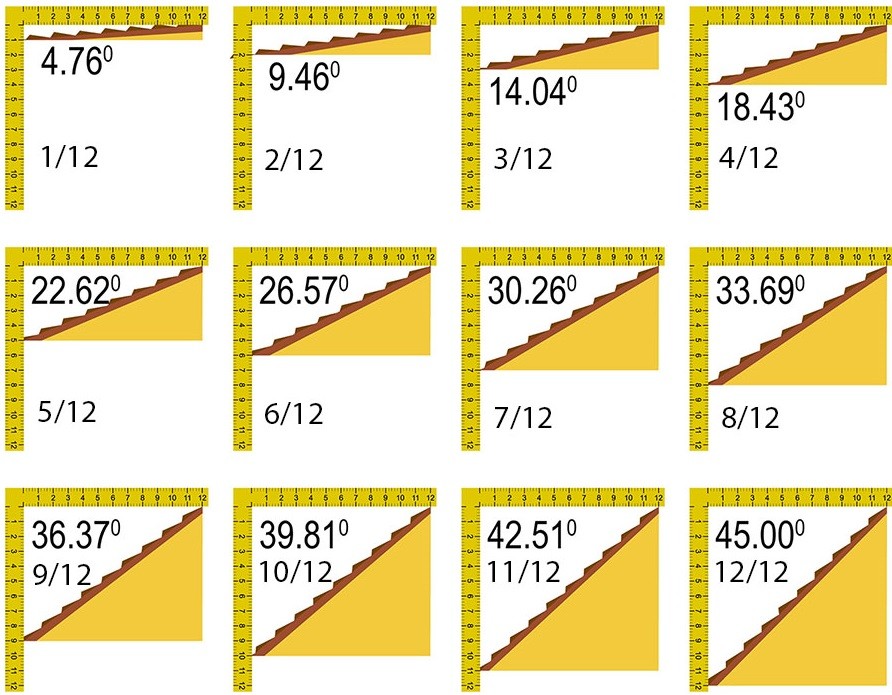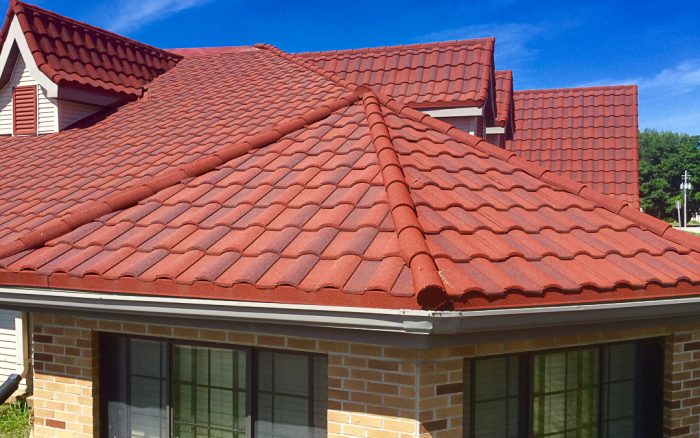The reliability of any building, as well as the comfort of living in it, depends primarily on the quality of its roof.
And one of the criteria for the quality of the roof is its slope.
Since it depends on its size and the amount of roofing material, the choice of slope angle and its preliminary calculations are made before the purchase of the selected roofing material.
What affects it
Depending on the size of the slope of the roof slopes, the specificity of the roof operation depends.
It is accepted to allocate 4 types of roofs:
- high, with an angle of 45-60 degrees;
- pitched roofs, with an angle of 30 to 45 degrees;
- gentle, with an angle of slope of 10-30 degrees;
- flat. The slope is 10 degrees and less.
The choice of the size of this parameter is influenced, first of all, by natural factors, which are characteristic for this area.

Wind load
The strongest wind puts the highest pressure on high roofs.
Because these roofs have a very large area because of the large angle of inclination.
The large surface area has a very high sailing speed.
Accordingly, the load on the entire rafter system is very high.
And if you decide to make a high roof with a very large slope, you should also take care of a very strong base.
However, in areas where strong winds prevail, it is not safe to arrange a flat roof.
In this type of roofing, the lower part of the slope will be under high pressure in strong winds.
And if the roof anchorage is weakened, the whole structure can be broken.
Therefore, in areas where strong winds are frequent, it is recommended to arrange pitched roofs with a slope of 25 – 30 degrees.
If the wind force is low, the roof pitch may be 30-45 degrees.
Snow load
If there is heavy snowfall in the area where the house is built during the cold season, you should build a roof with a large angle of slope.
In this case a high roof is beyond competition.
On roofs with a high gradient, the snow will not stay long.
That is why in all Nordic countries the roofs on buildings are very high (Sweden, Finland, Norway, etc.).
The smaller the roof slope angle, the longer the snow will stay on the slopes.
The greater the weight will affect the entire structure.
If the rafter system structure is made with a large margin of safety, some snow on the roof is not bad.
It provides some additional thermal insulation.
However, if the structure of the rafter system is not designed for heavy loads, there can be big problems.
We choose a slope depending on the roofing material used
Gone are the days when only two types of roofing materials were used for covering: tiles and slate.
Today there is a huge amount of roofing materials!
Each material has its own individual technical characteristics and this in calculating the required value of the angle of slope must be taken into account.
After all, it may happen that the material you like on its parameters simply do not fit.

Minimum angle
There is a concept of the minimum value of this parameter.
This parameter is different for each of the materials.
And if the slope angle obtained as a result of your calculations is less than the minimum value for your chosen roofing material, then it can not be used for the device roofing.
In the future, there can be a lot of problems if you break this rule:
- For any prefabricated roofing material, such as shingles or slates, the minimum slope is 22 degrees. It is at this value at the joints do not accumulate moisture and moisture does not seep into the roof;
- the slope angle for rolled materials (roofing felt, bikrost etc.) depends on how many layers you plan to lay. If there are three layers, the slope can be 2-5 degrees. If there are two layers, the slope should be increased to 15 degrees;
- the producers of corrugated board recommend to arrange the angle of slope of 12 degrees when installing a roof of this material. Profiled flooring can be used at lower values, but in this case it is necessary to glue the joints of the sheets with sealant;
- for metal tiles the value of this parameter is 14;
- for ondulin, the value is 6 degrees;
- the minimum slope for soft shingles is 11 degrees. But the obligatory condition – a continuous lath;
- for membrane roof coverings, there are no strict requirements for the minimum value of this parameter.
- This is about minimum values.
So you don’t have to overlay the whole roof in the middle of winter.
Now about the optimum values…
If rain and snow are frequent in the region, the optimal roof will be the roof with a slope angle of 45 – 60 degrees.
After all, it is necessary to remove the load of water and snow from the roof as soon as possible.
Because the strength of the rafter system is not infinite.
And thanks to the large slope of the roof, rain and snow will go down as quickly as possible.
